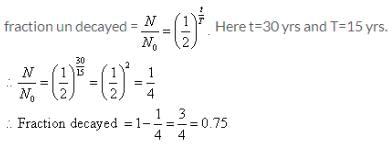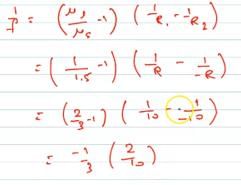VITEEE Physics Test - 2 - JEE MCQ
30 Questions MCQ Test - VITEEE Physics Test - 2
In a Wheatstone's bridge all the four arms have equal resistance R. If the resistance of the galvanometer arm is also R, the equivalent resistance of the combination as seen by the battery is
Emission of electrons in the photoelectric effect is possible, if
A sheet of aluminium is inserted in the air gap between the parallel plate capacitor, without touching any the two plates of the capacitor. The capacitance the capacitor is:
When a current is passed through water acidified with a dilute sulphuric acid, the gases formed at the platinum electrodes are
The resistance of a coil at 100oC is 4.2 Ω. If temperature coefficient of resistance of the coil material is 0.004oC-1, then its resistance at 0oC is
The internal resistance of a cell of e.m.f. 3 V is 0.1 Ω, If it is connected to a resistance of 2.9Ω then voltage across the cell will be
In short wave communication waves of which of the following frequencies will be reflected back by the ionospheric layer having electron density 1011 per m-3?
When a current flows in a wire, there exists an electric field whose direction is
A particle with a specific charge S is fired with a speed v towards a wall at a distance d, perpendicular to the wall. What minimum magnetic field must exist in this region for the particle not to hit the wall ?
A generator at a utility company produces 100 A of current at 4000 V. The voltage is stepped up to 240000 V by a transformer before it is sent on a high voltage transmission line. The current in transmission line is
A step-up transformer has transformation ratio of 3:2 What is the voltage in secondary, if voltage in primary is 30 V ?
The coefficient of mutual inductance, when magnetic flux changes by 2 X 10-2 Wb and current changes by 0.01 A is
A point charge q is placed at a distance a/2 directly above the centre of a square of side a. The electric flux through the square assuming it to be one face of the cube is
Which of the following waves have the maximum wavelength?
Equal charges are given to two conducting spheres of different radii. The potential will
A 2 μ F condenser is charged to 500V and then its plates are joined through of consistance. The heat produced in the resistance in joules is
If a point charge q be rotated in a circle of radius r around a charge Q, the work done will be
The electric potential at a point (x, y) in the xy-plane is given by: V = -kxy. The electric field intensity at a distance r from the origin varies as
A straight wire of diameter 0.5 mm carrying a current of 1 A is replaced by another wire of 1 mm diameter carrying the same current. The magnetic field far away will be
An electric dipole of dipole moment p is placed in uniform electric field of strength E. If θ is the angle between p and E, then potential energy of the dipole becomes maximum, when θ is
The reason for the continuous emission of energy by the sun is
A radioactive element has a half life of 15 years. The fraction that will decay in 30 years is
The photoelectric threshold of a certain metal is 30 Å. If the radiation of 2000 Å is incident on the metal
A double convex lens made of air with both radii of curvature being 10 cm is placed in a medium of refractive index 1.5. The focal length and nature of lens is
In comparison to a half wave rectifier, the full wave rectifier gives lower
If a full wave rectifier circuit is operating from 50 Hz mains, then fundamental frequency in the ripple will be
The current gain for a transistor working as common-base amplifier is 0.96. If the emitter current is 7.2 mA, then the base current is
To obtain electrons as majority charge carriers in a semiconductor, the impurity mixed is



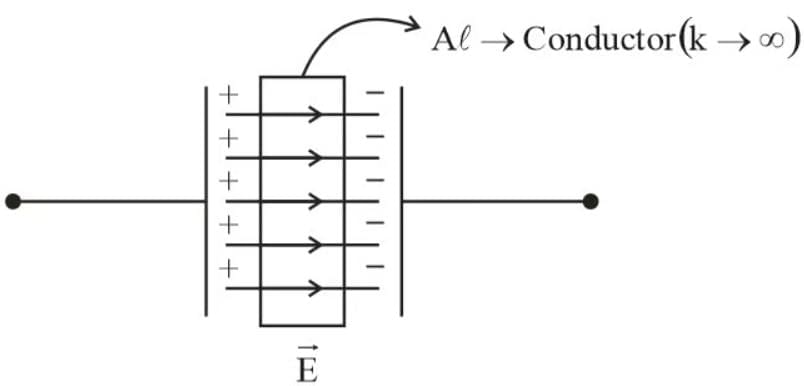






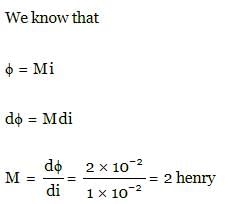
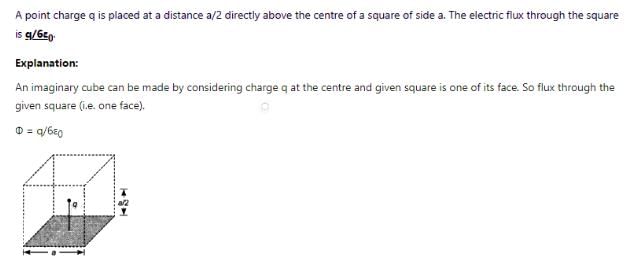

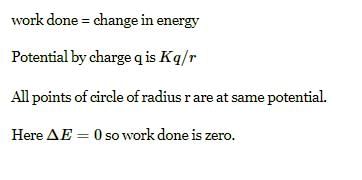

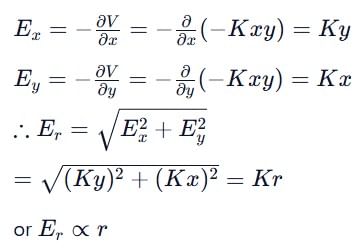


 is the dipole moment,
is the dipole moment, is the electric field,
is the electric field, and
and  .
.